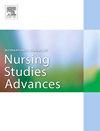护士文化能力评估量表:跨文化适应与验证
IF 3.1
Q1 NURSING
International Journal of Nursing Studies Advances
Pub Date : 2025-01-29
DOI:10.1016/j.ijnsa.2025.100303
引用次数: 0
摘要
研究人员揭示了少数民族和非少数民族人群在安全事件和患者结局方面的显著差异,强调了对文化能力有更深层次理解的必要性。作为一线护理人员,护士在提供具有文化敏感性的护理方面发挥着关键作用。衡量文化能力可能具有挑战性。在美国开发和验证的文化能力评估可以帮助应对这些挑战。方法研究荷兰版《文化能力评估》在荷兰护士中的翻译和跨文化适应,同时评估其心理测量特征。我们采用横断面设计,分两个阶段进行研究。通过荷兰护士协会的通讯和医疗保健组织的内部分配,从荷兰各地招募护士。第一阶段的重点是跨文化适应和翻译。第二阶段的重点是心理测试。采用验证性因子分析(CFA)对数据进行分析。内部一致性评估,利用麦当劳的omega结果样本包括447名荷兰护士在不同的医疗机构工作。在第一阶段的研究中,由29个项目组成的文化能力评估被缩减为27个项目。经CFA检验,15项的双因子模型拟合最佳,内部一致性达到熟练水平。结论通过双因素15项荷兰文化能力评估,我们为荷兰护士提供了一种自我评估其文化能力的工具,特别关注他们在照顾文化差异患者时的意识、敏感性和行为本文章由计算机程序翻译,如有差异,请以英文原文为准。
The Dutch-translated cultural competence assessment scale for nurses: Cross-cultural adaptation and validation
Background
Researchers have revealed significant disparities in safety events and patient outcomes between minority and non-minority populations, highlighting the need for a deeper understanding of cultural competence. As frontline caregivers, nurses play a key role in providing culturally-sensitive care. Measuring cultural competence can be challenging. The Cultural Competence Assessment, developed and validated in the United States of America, can help to address these challenges.
Method
The aim was to determine the translation and cross-cultural adaptation, while evaluating the psychometric properties, of the Dutch version of the Cultural Competence Assessment among Dutch nurses. We used a cross-sectional design and conducted the study in two phases. Nurses from all over the Netherlands were recruited through the newsletter of the Dutch nurses association and internal distribution by healthcare organisations. The first phase focused on cross-cultural adaptation and translation. The second phase focused on psychometric testing. Data were analysed using Confirmatory Factor Analysis (CFA). Internal consistency was evaluated, utilising McDonald's omega
Results
The sample consisted of 447 Dutch nurses working in different healthcare settings. The original Cultural Competence Assessment consisting of 29 items was reduced to 27 items in the first phase of the study. After CFA, the best fit was obtained with a two-factor model consisting of 15 items, with a proficient level of internal consistency.
Conclusion
With the two-factor, 15-item Dutch Cultural Competence Assessment, we have provided Dutch nurses with an instrument to self-assess their cultural competence, paying special attention to their awareness, sensitivity, and behaviour when caring for people with cultural differences
求助全文
通过发布文献求助,成功后即可免费获取论文全文。
去求助
来源期刊

International Journal of Nursing Studies Advances
Nursing-General Nursing
CiteScore
5.80
自引率
0.00%
发文量
45
审稿时长
81 days
 求助内容:
求助内容: 应助结果提醒方式:
应助结果提醒方式:


